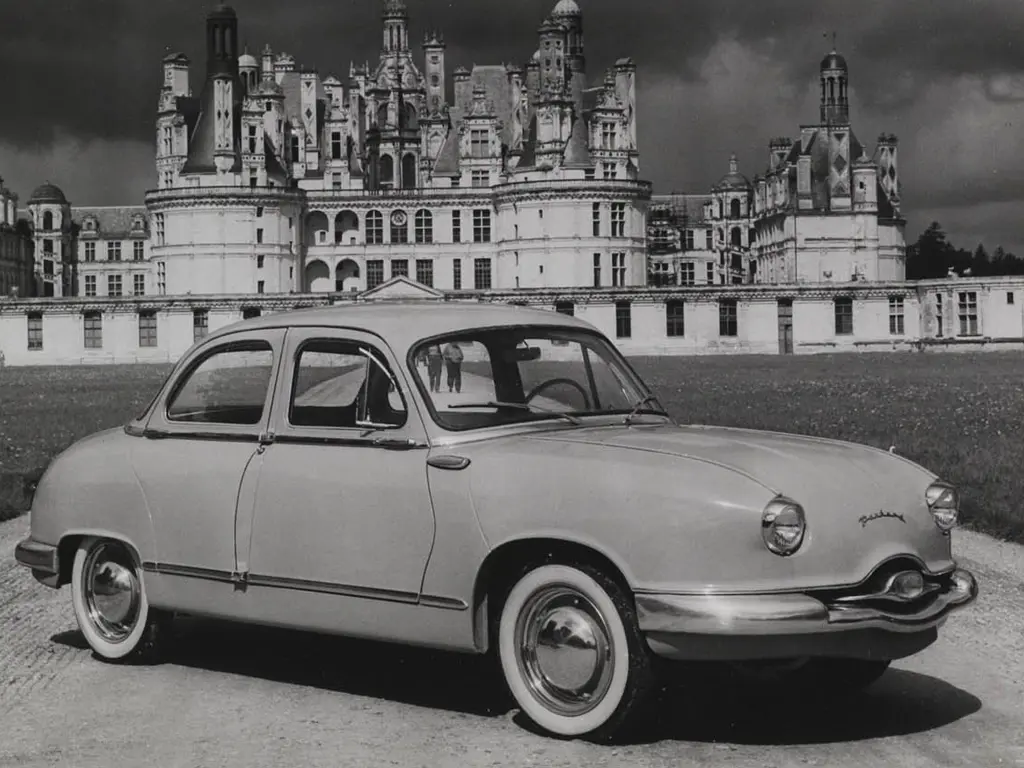The Panhard Dyna Z at 70
12 June 2023
On the 17th June 1953, Panhard launched the Dyna Z at Paris’s Les Ambassadeurs – and to say it caused a sensation would be an understatement. For one, there was its appearance; the company’s Head of Chassis Development and Chief Stylist, Louis Bionier, designed and tested the monocoque aluminium body in a wind tunnel. Moreover, Panhard proudly claimed the Z had a drag coefficient of just 0.28.
And then there was the fact the Dyna Z weighed only 1,560 lbs thanks to its ‘Duralinox’ bodywork, a blend of aluminium, copper and manganese. The overall length was around 15 feet, making it longer than a Ford Zephyr-Six, but power was from a diminutive air-cooled 851cc ‘flat twin’ unit driving the front wheels. The transmission had three speeds plus an overdrive top gear.
Panhard claimed fuel economy of over 33 mpg, while the running gear was mounted on two bolt-in tubular steel subframes joined by sill-mounted steel plate reinforcements. Meanwhile, your friendly dealer would tell you about the rack & pinion steering, the independent front suspension - and how the front and rear screens were designed to pop out in the event of an accident.

Panhard et Levassor, France’s oldest car maker, built their first petrol-engine vehicle in 1890. In the 1930s, French motorists associated the marque with Grande Bourgeoisie cars, but the post-war government’s ‘Plan Pon’ promoted volume production over specialised vehicles. Consequently, Panhard introduced the lightweight Dyna X at the 1946 Paris Motor Show.
Six years later, the company embarked on ‘Projet VLL’, aiming to convey six adults in comfort, achieve a top speed of 81 mph and use the same engine as its predecessor. Autocar of the 28th August 1953 marvelled at how a Z owner could remove the entire power plant by “detaching the brake, steering, petrol and electrical connections withdrawing six bolts”.
The Guardian reported Panhard hoped to start RHD British sales in 1954, but right-hand-drive models were not available until near the decade’s end. This did not prevent The Motor from stating in 1954: “the bold theories of its makers are entirely borne out by its behaviour under test”. But in France, Panhard suffered from a marked increase in the price of aluminium. This meant at 760,000 Francs (the equivalent of £775 10s), the Dyna Z cost far more than the rival Peugeot 203 or Simca Aronde.
The company lost money on every model, so on the 6th April 1955, Citroën acquired a 25 per cent share in the firm. They could now sell the Z in their showrooms, bridging the gap between the 2CV and the forthcoming DS. There was also extra production capacity for their Deux Chevaux van. By September 1955, the Dyna now had a steel bodyshell with an aluminium boot, bonnet and doors, and two years later, the coachwork was all-steel.
In 1956 the London dealer Tarrant and Fraser began selling the Z, but few potential customers dialled PRImrose 2647 to arrange a test drive. In 1958 Citroën GB commenced sales of RHD versions, but import duties ensured the Panhard cost as much as two Austin A35s. So probably just three new Zs found homes in the UK.
Panhard replaced the Dyna Z with the facelifted PL17 on the 29th of June of 1959 - so named for its 5 CV motor, six seats, and 6L/100 km fuel economy. The Irish Messerschmitt agent John Caldwell assembled a small number for the Eire market, but Citroën had no plans for their Slough plant to build the PL17.
Panhard had lost its independence when the last examples departed the factory in May 1965. Production of the 24CT coupe ended on the 20th July 1967, marking the end of passenger cars bearing the famous name. Today, Richard Vick, the president of the Panhard et Levassor Club GB, is the proud owner of three fine machines –a 24CT, a PL17 and a 1955 aluminium-bodied Dyna Z. We will be featuring this trio in a special blog next week, but for now, here are Richard’s words on the last-named – “It is roomy, economical but no-nobody knows what it is – I’ve heard people say, ‘it is a Packard!’”. C’est la vie…
With Thanks To: Richard Vick and Panhard et Levassor Club GB (panhardclub.co.uk)
